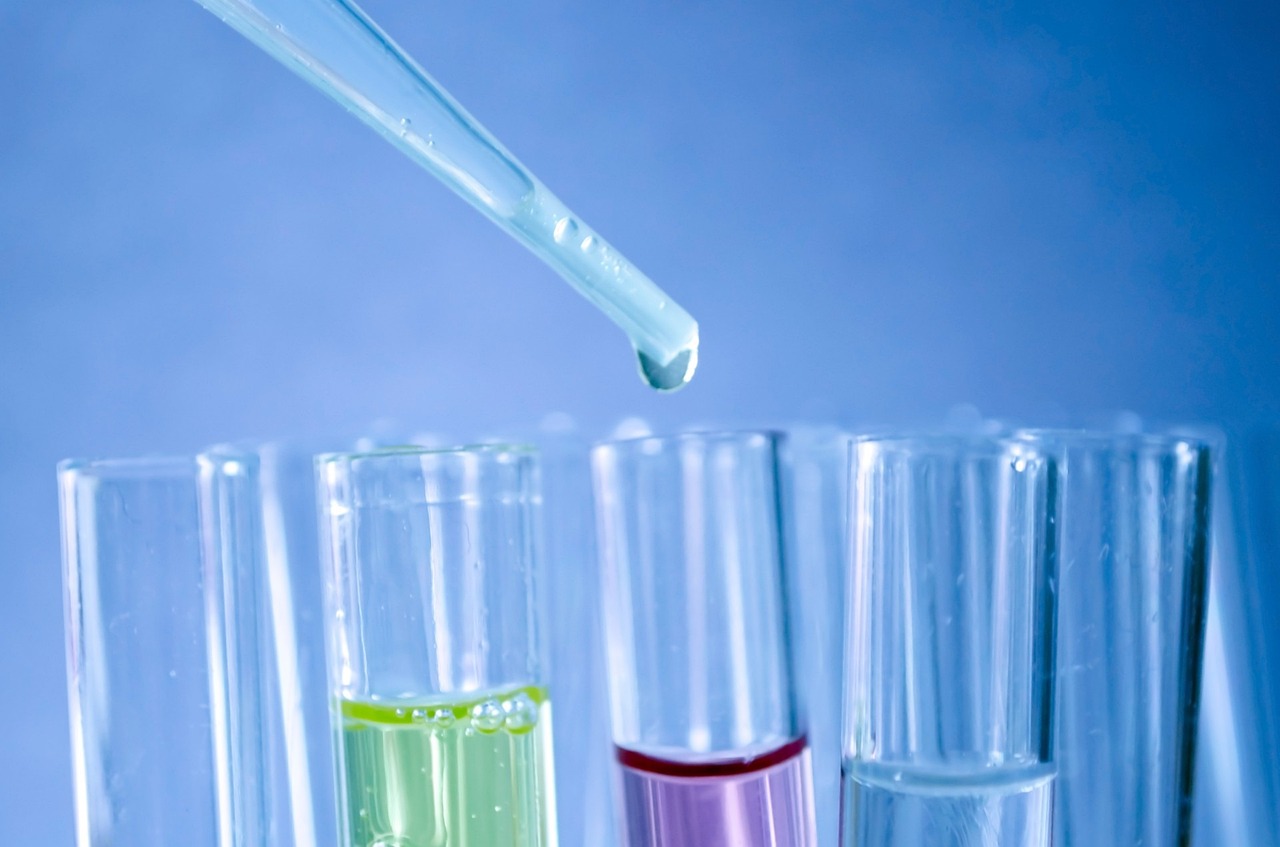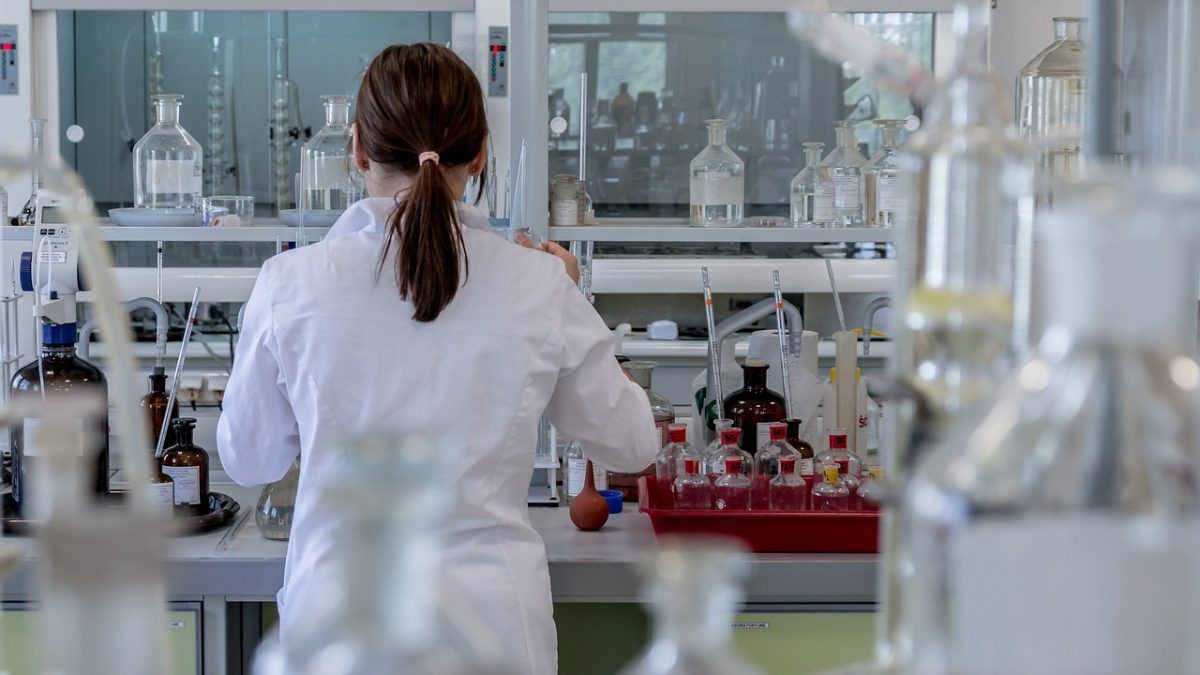Titration is a common laboratory technique used to determine the concentration of an unknown solution. It works by slowly adding a solution of known concentration, called the titrant, to the unknown solution until the chemical reaction between them is complete. A color change or electrical measurement usually indicates the end of the reaction. Knowing the volume of titrant required to reach the endpoint allows the concentration of the unknown to be calculated.
Table of Contents
What is the simple definition of Titration?
Titration is a process used to determine the concentration of a substance in solution by adding a liquid (titrant) of known concentration until a chemical reaction is completed. The amount of titrant added to reach the endpoint allows the concentration of the substance (analyte) to be calculated.
In summary, Titration involves:
- An analyte of unknown concentration
- A titrant of known concentration
- Adding the titrant slowly to the analyte
- A chemical reaction between the two
- Detecting the endpoint of the response, often with an indicator
- Calculating the analyte concentration based on the amount of titrant used
So, in simple terms, Titration uses the volume of a titrant of known concentration to determine the concentration of an unknown analyte via a chemical reaction between them. The endpoint signals when the reaction is complete.
Also Read: Techno Karan: The Rise of Digital Guru
What are the 4 types of Titration?
The 4 main types of Titration are:
- Acid-base Titration
- Redox titration
- Precipitation titration
- Complexometric Titration
Some key points about Titration:
- It relies on a chemical reaction between the titrant and analyte (the unknown solution). This reaction must go to completion and have a measurable endpoint.
- Common titrants include acids, bases, and redox agents. The analyte should react stoichiometrically with the titrant.
- Indicators are often used to mark the endpoint. Acid-base titrations may use pH indicators that change color at a certain pH. Redox titrations may use color indicators that change at a specific electrode potential.
- The titrant is slowly added from a buret, allowing precise volume measurements. Alternatively, automated titrators may drip titrant at a controlled rate.
- The concentration of the unknown analyte can be calculated using the stoichiometry of the titration reaction. The volume of titrant to reach the endpoint is proportional to the analyte concentration.
- Titration curves can be constructed by plotting some measured parameter (e.g., pH) vs. titrant volume added. The shape of the curve provides information about the titration reaction.
- Titration is widely used for concentration analysis in chemistry, biology, medical science, and environmental science. Applications range from quantifying acids and bases to measuring blood gas levels.
- Proper technique is important for accurate titration results. Factors like inconsistent endpoint detection, slow titrant addition, and imprecise measurements can introduce errors. Replicate analyses are recommended.
What is Titration used for?
Titration is a versatile analytical technique used to determine the concentration of an unknown solution. It is widely used to quantify the amounts of acids, bases, and other reactive analytes in a sample. Titration relies on a chemical reaction between the unknown analyte and a solution of known concentration called the titrant. The amount of analyte can be calculated by measuring the volume of titrant needed to reach the reaction endpoint. Titration finds extensive use in chemistry, clinical settings, environmental monitoring, and other fields that require accurate concentration analysis of target compounds in a sample. It is a standard method for quantitation that provides reliable results when performed correctly.

Titration Examples
Here are some common examples of Titration:
– Acid-base Titration – This involves titrating a known concentration of an acid or base against a solution of unknown concentration to determine its acidity or alkalinity. A pH indicator marks the endpoint when the equivalents of acid and base are reached and used to quantify acids like HCl or bases like NaOH.
– Redox titration – The titrant and analyte undergo a redox reaction. The endpoint can be detected using an indicator like starch (color change) or a potentiometer (voltage change) and is often used to find the concentration of Fe2+ or C2O4 2- in a sample.
– Precipitation titration – The titrant reacts with the analyte to form a precipitate. The first appearance of precipitate detects the endpoint. It can be used to determine chloride using silver nitrate titrant to form the insoluble precipitate, silver chloride.
– Complexometric Titration – The titrant binds to the analyte via a coordination complex. They are commonly used to quantitate metal ions like Ca2+ and Mg2+ using EDTA as the titrant, forming strong complexes with metal cations.
– Argentometric Titration – Titration using silver ions as the titrant. They are used to determine halides and cyanides, which form insoluble silver compounds—the appearance of the precipitate marks the endpoint.
– Non-aqueous Titration – Uses a non-aqueous solvent instead of water. Allows Titration of substances that may react with water, such as organometallic compounds.
– Back Titration – An excess of one reagent is added to react with the analyte completely. The remaining excess is then titrated with a second titrant to determine the analyte amount indirectly.
Also Read: The Art and Science of Wine Tasting Unveiled
Conclusion:
In summary, Titration uses the volume of a known solution needed to react completely with an unknown to determine its concentration. With the right setup and chemistry, it provides a simple yet powerful analytical technique across many scientific fields. Choosing an appropriate titration reaction with a definitive, measurable endpoint is key.

